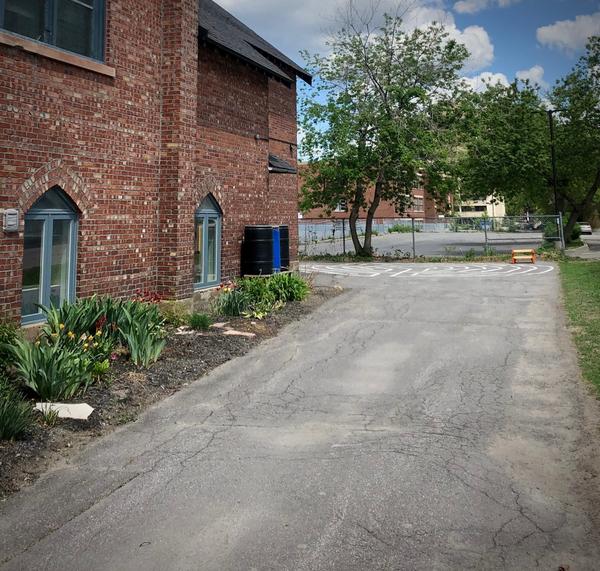

Find the labyrinth at the back of the church, with access off Echo Drive or through the Immaculata parking lot. No reservations or permission required – you are simply welcome anytime.
There is one path into the labyrinth, leading you to the centre. Once you arrive at the centre and have spent whatever time you need, retrace your steps out. You may choose to walk around the whole outside of the labyrinth as a way of ending their walk.
You are welcome to walk this labyrinth in any way that feels right to you – it is a safe path for prayer, reflection, discovery, and even play (we have seen children rejoice in running the labyrinth!) If you would like further guidance, read on:
For openness:
As I walk this sacred path, may I open my heart.
May I open to …
truth, love, acceptance, forgiveness, healing, wisdom, new life, the presence of the Divine One.
For guidance:
May I hear the voice of love.
May I hear words of peace.
May I trust what I hear.
May I know my next step on the way….
“Whether you turn to the right or to the left, your ears will hear a voice behind you saying: ‘This is the way, walk in it.’” Isaiah 30:21
For forgiveness:
God of compassion and love
I seek to walk a path of forgiveness
that leads to healing and new life.
Guide me on the path of truth and righteousness.
May I know your presence and peace.
(Forgiveness is most often a journey or process of understanding and healing. It often takes more time and effort than we may want or expect, and may require the help of others. God is with you. Reach out to someone trustworthy if you need help.)
Labyrinths are a simple tool used to engage our bodies, minds and spirits in prayer and reflection.
The labyrinth is believed to have evolved out of the most basic spiral and circle forms, found in nature. While its origins are still mysterious can be traced back over 4000 years. Over time, the labyrinth pattern, its symbolism, and its mythology have been integrated into the lives of people of different cultures for a variety of purposes, both spiritual and secular.
While Christians used labyrinths found on pre-Christian sites and modeled their own after those earliest labyrinth forms, the development of the high medieval Christian labyrinth was a breakthrough in design. The best known is the 13th century 11-Circuit labyrinth in Chartres Cathedral, France. The medieval Christians walked the labyrinth as a way of symbolically participating in the great pilgrimage to Jerusalem.
Walking the labyrinth has re-emerged today as a powerful tool for personal and spiritual healing and growth, professional development, and community building. The labyrinth, both in permanent and portable forms, is now found in many contexts and environments including churches, schools, hospitals, birthing centres, hospices and other healthcare facilities, senior’s centres, retreat centres, prisons, community centres, parks and public and private gardens, as well as in the workplace.
We are very glad to provide access to a labyrinth at our church and pray that it will be a blessing to many.
(History of the labyrinth taken from the notes of Beverly Chen, Certified Labyrinth Facilitator, Ottawa, 2003)